Abstract
1. In the rat variation of metabolic heat production is the principal effector of thermoregulation. There is a continuous relationship between ambient temperature and metabolic rat over the whole range of tolerable environmental temperature. The mechanism that controls metabolic rate is unknown; this paper reports an attempt to test whether thyroid hormones provide the controlling pathway. 2. First, the changes in metabolic rate and in the plasma concentrations of thyroid stimulating hormone (TSH), triiodothyronine (T3) and thyroxine (T4) were measured in rats living in a controlled environment, first at 23 degrees C and then at 6 degrees C. Metabolic rate increased from approximately 290 to 470 kJ day-1 when the temperature was lowered, a factor of ca 1.6, and the diurnal rhythm disappeared. The concentration of TSH increased from approximately 320 to 450 ng ml-1 (with loss of diurnal rhythm) and of T3 from ca 0.7 to 1.0 nmol l-1, a factor of ca 1.4 in each case. T4 concentration did not change. 3. Next, a dose schedule of T3 was found that, when injected I.V. via indwelling jugular cannulae in the same rats in an environment at 23 degrees C, maintained an increase in T3 concentration rather greater than had been found at 6 degrees C. 4. This dose of T3, given to the same rats at 23 degrees C, did not affect metabolic rate (or its diurnal pattern). 5. It is therefore unlikely that the increase in T3 concentration evoked the increase in metabolic rate when ambient temperature was changed from 23 to 6 degrees C; and therefore that the thyroid controls variation of metabolic rate in 'everyday' thermoregulation in the rat.
Full text
PDF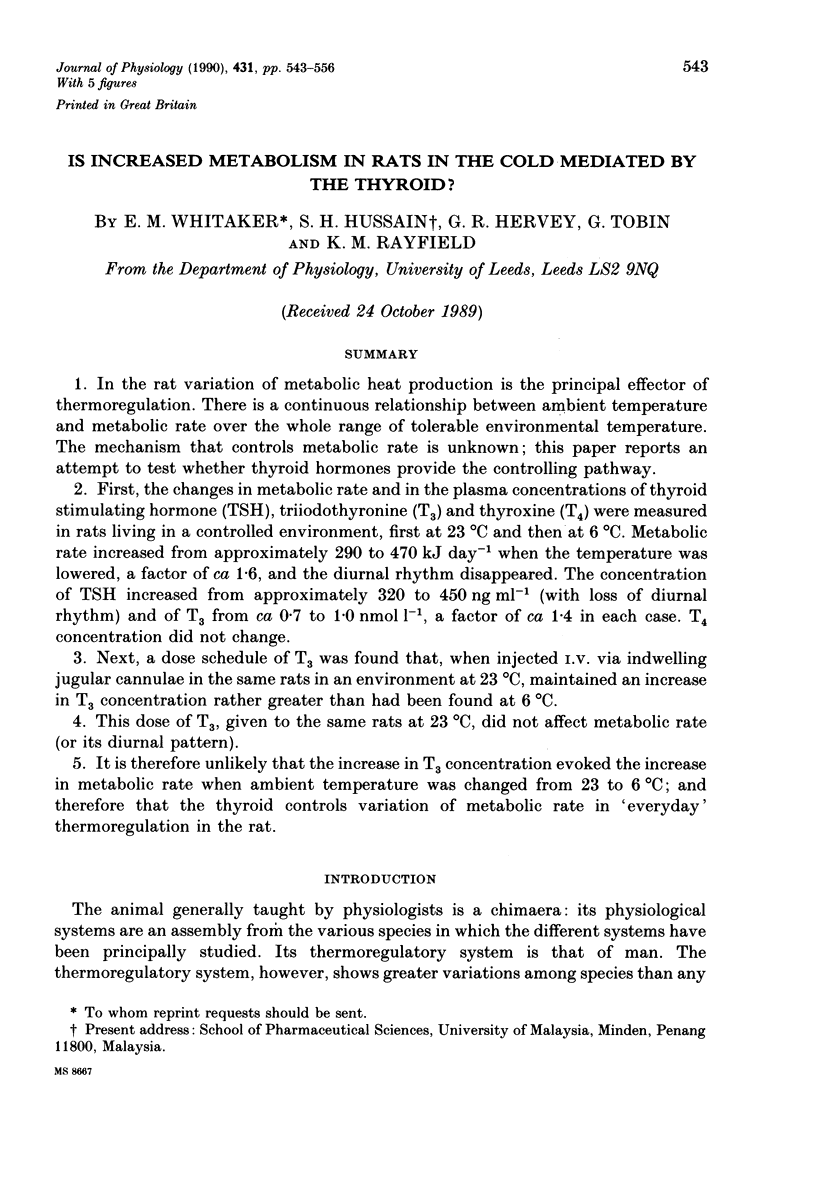
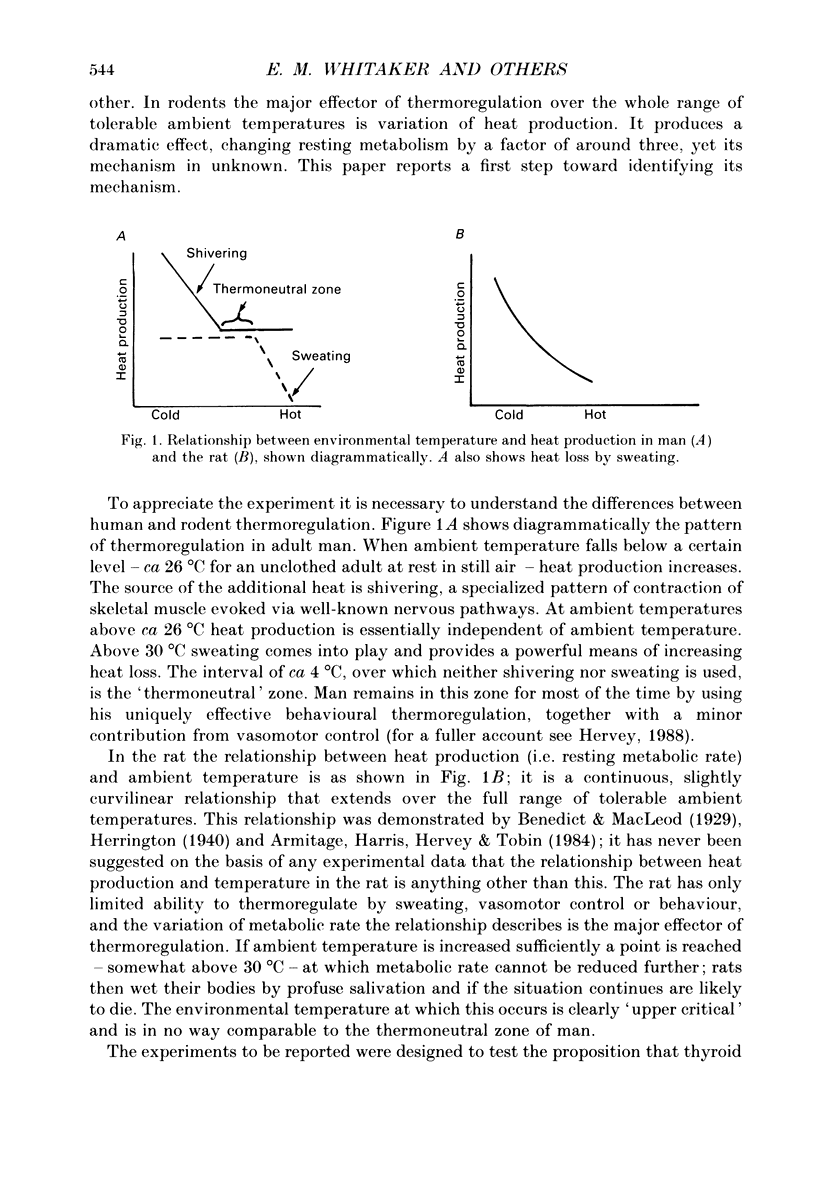
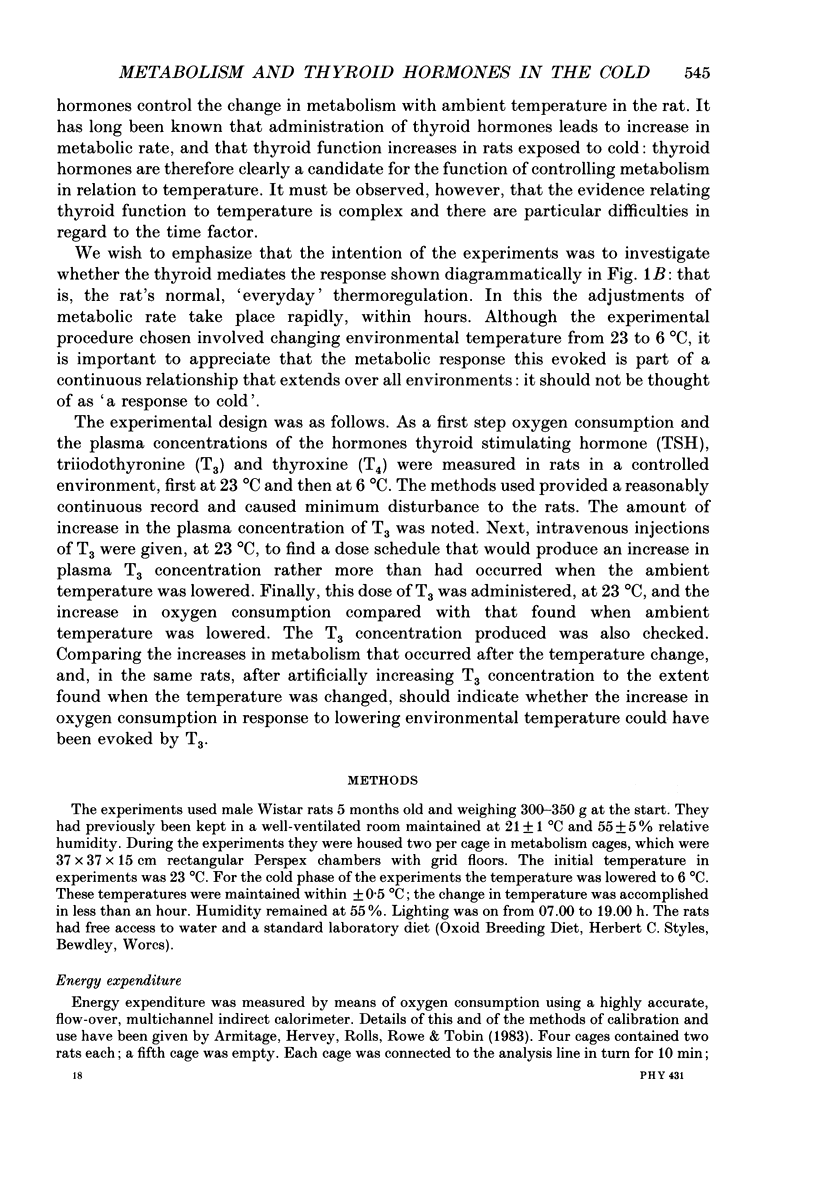

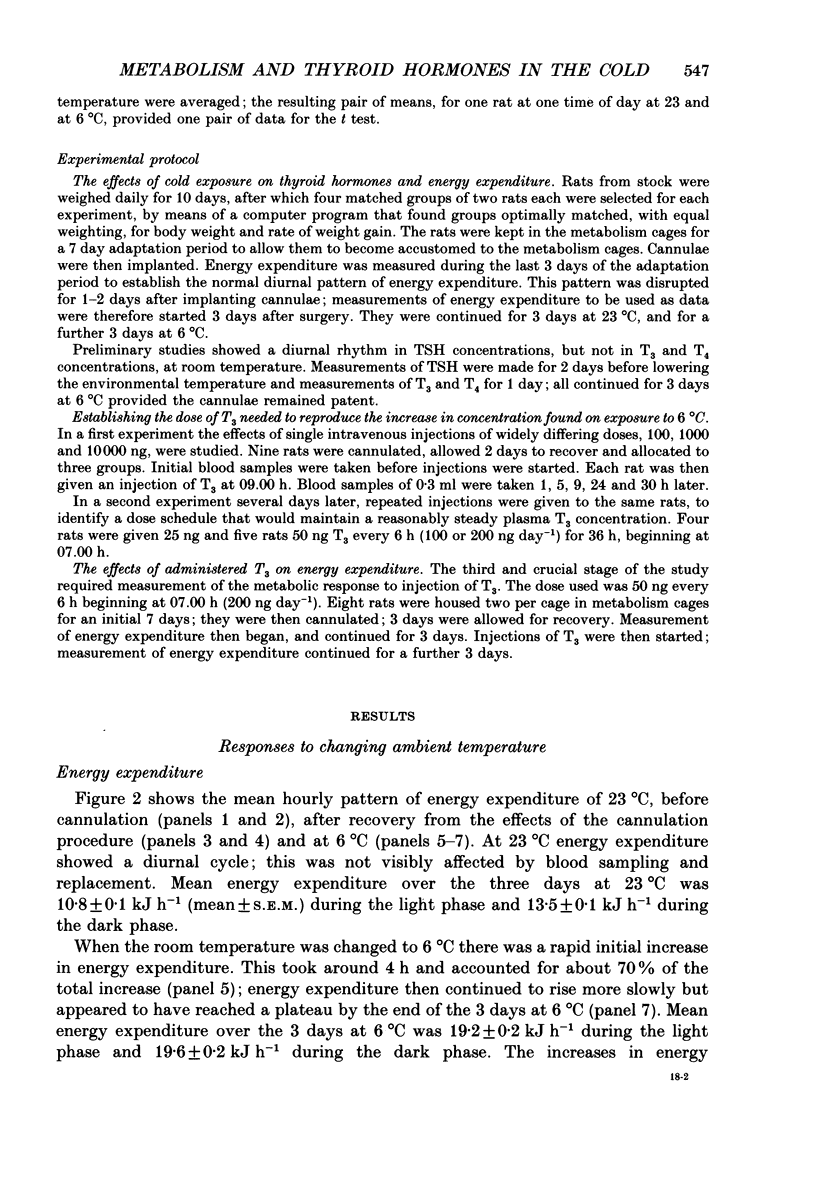

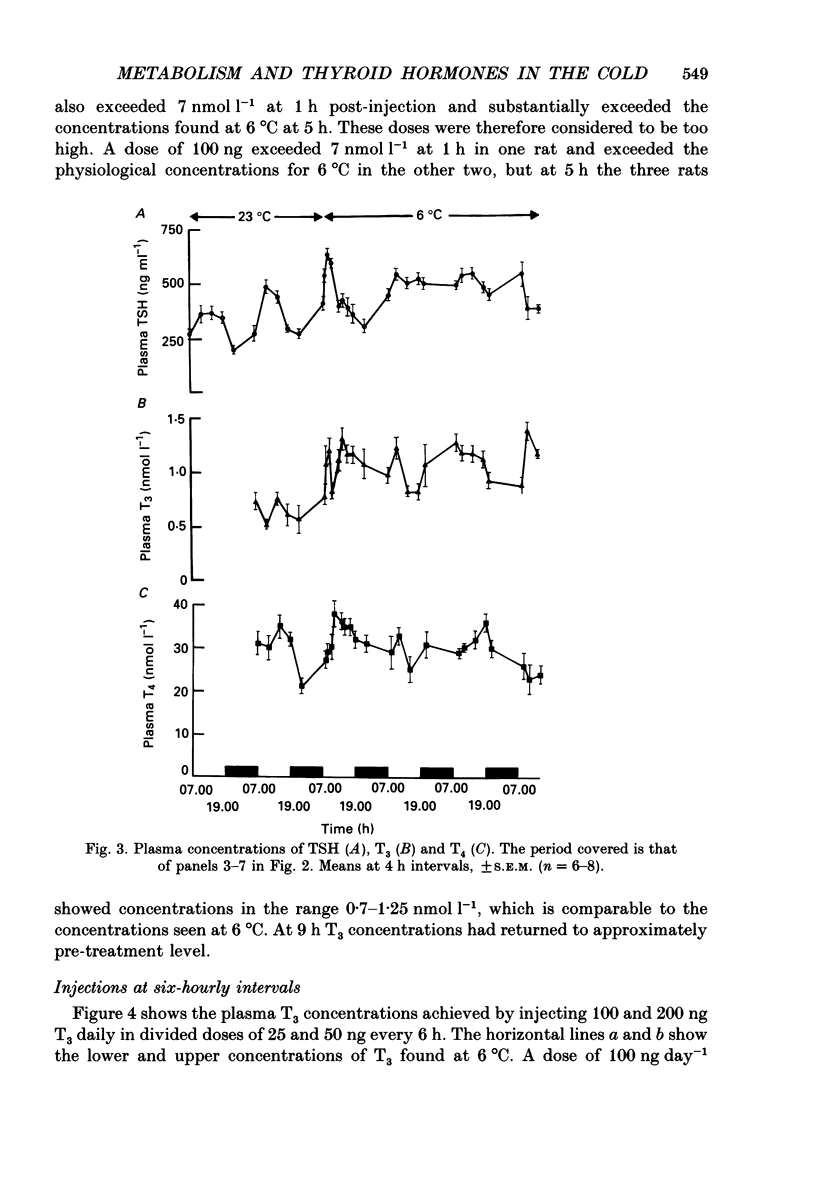
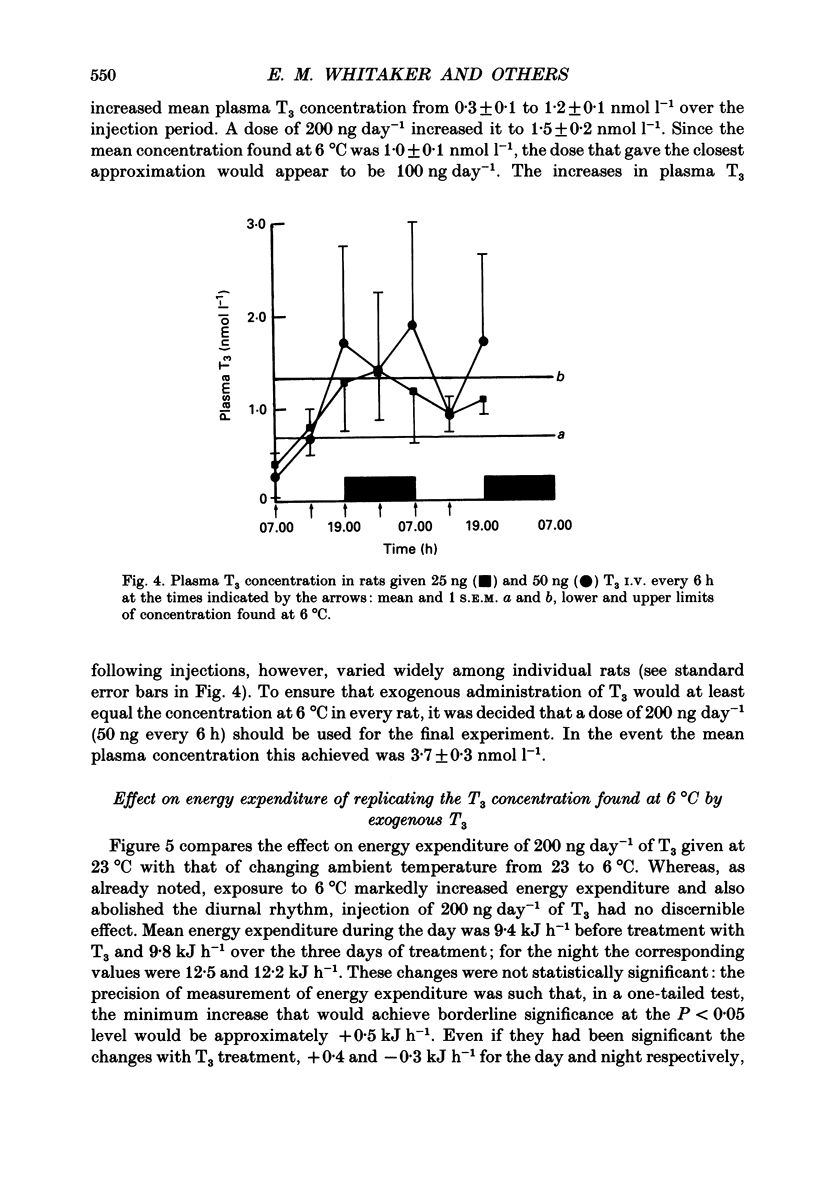
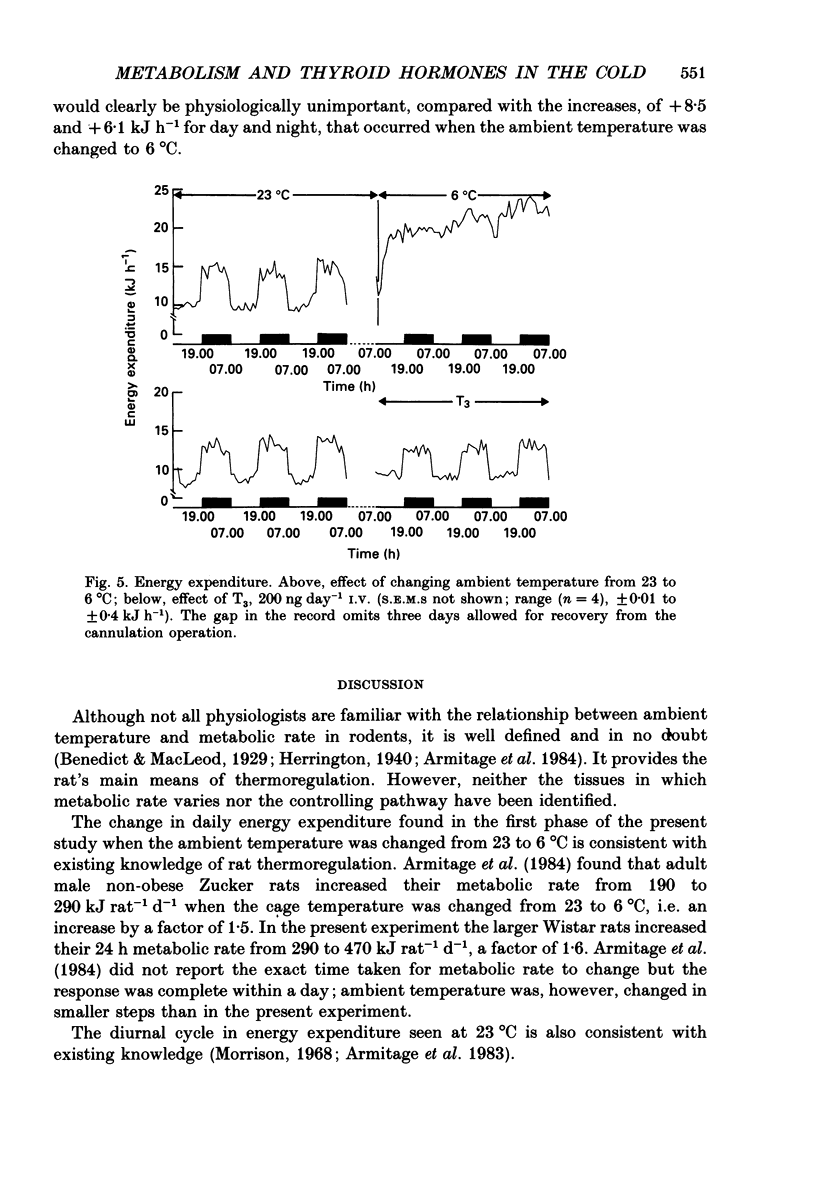
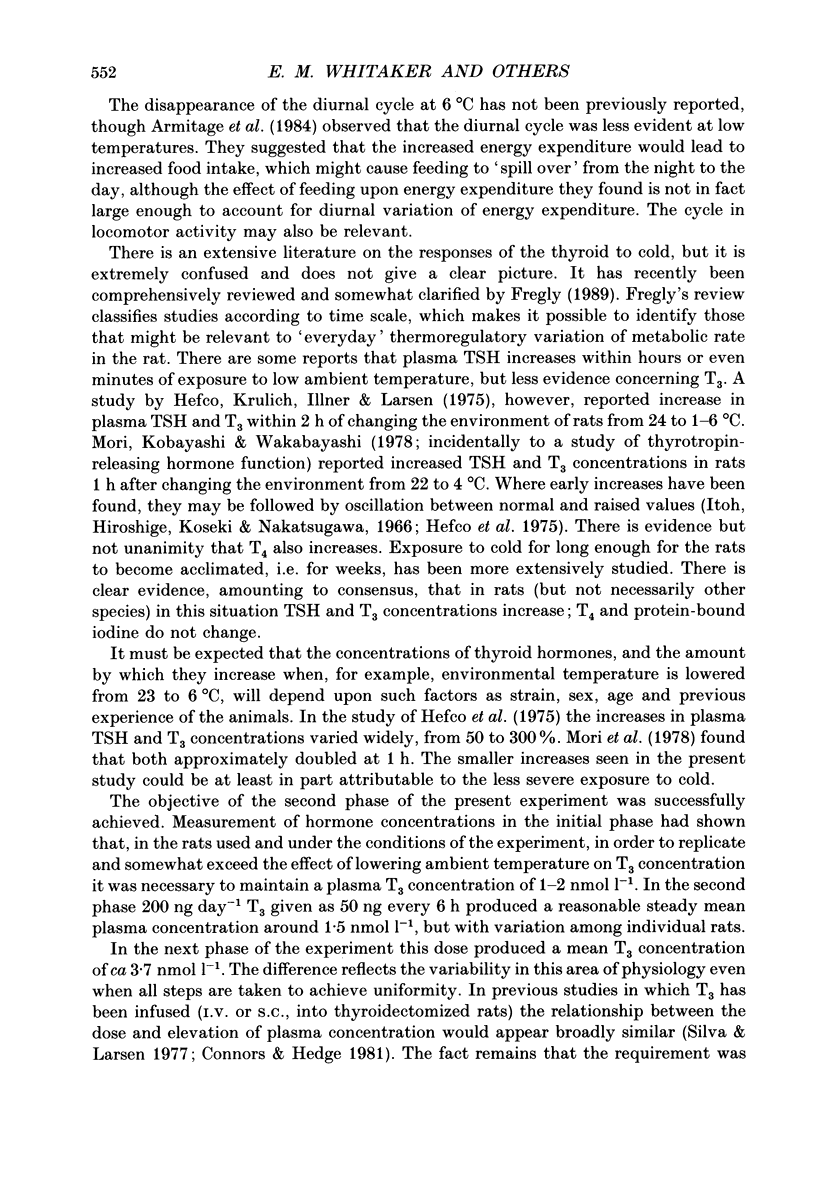
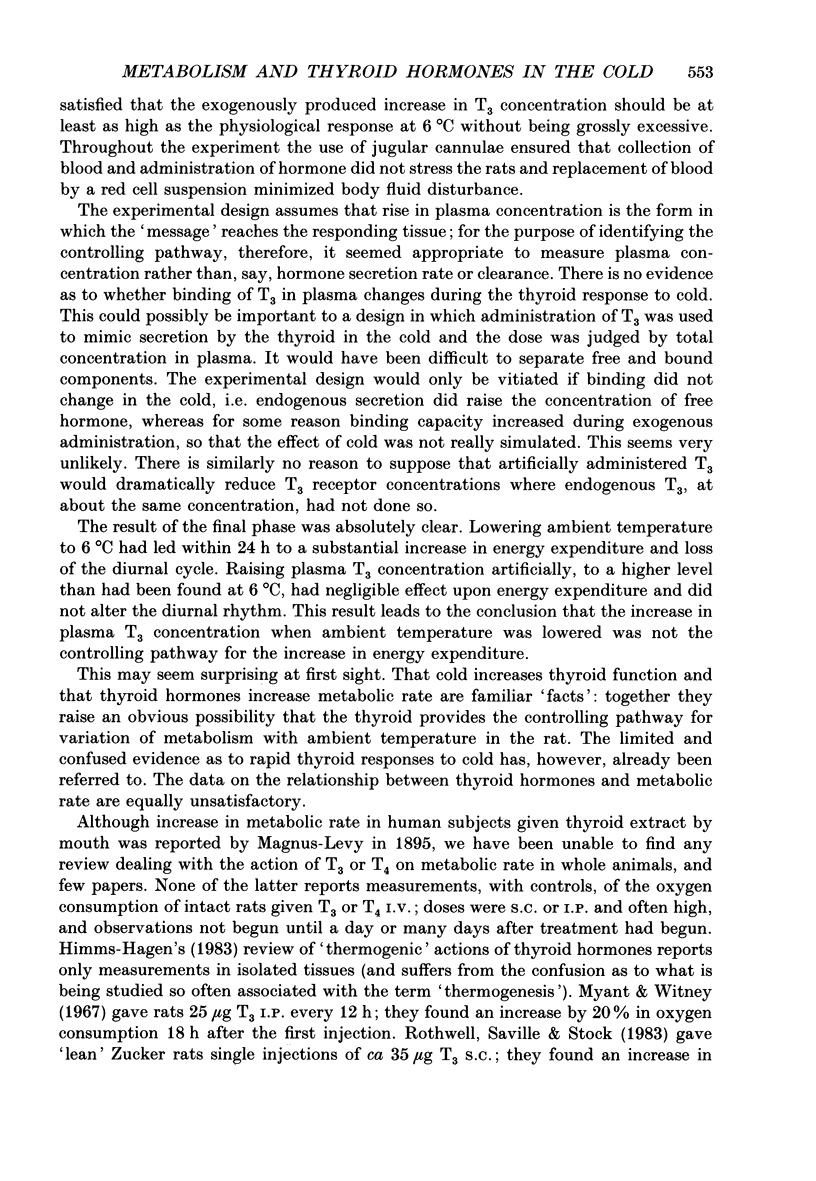
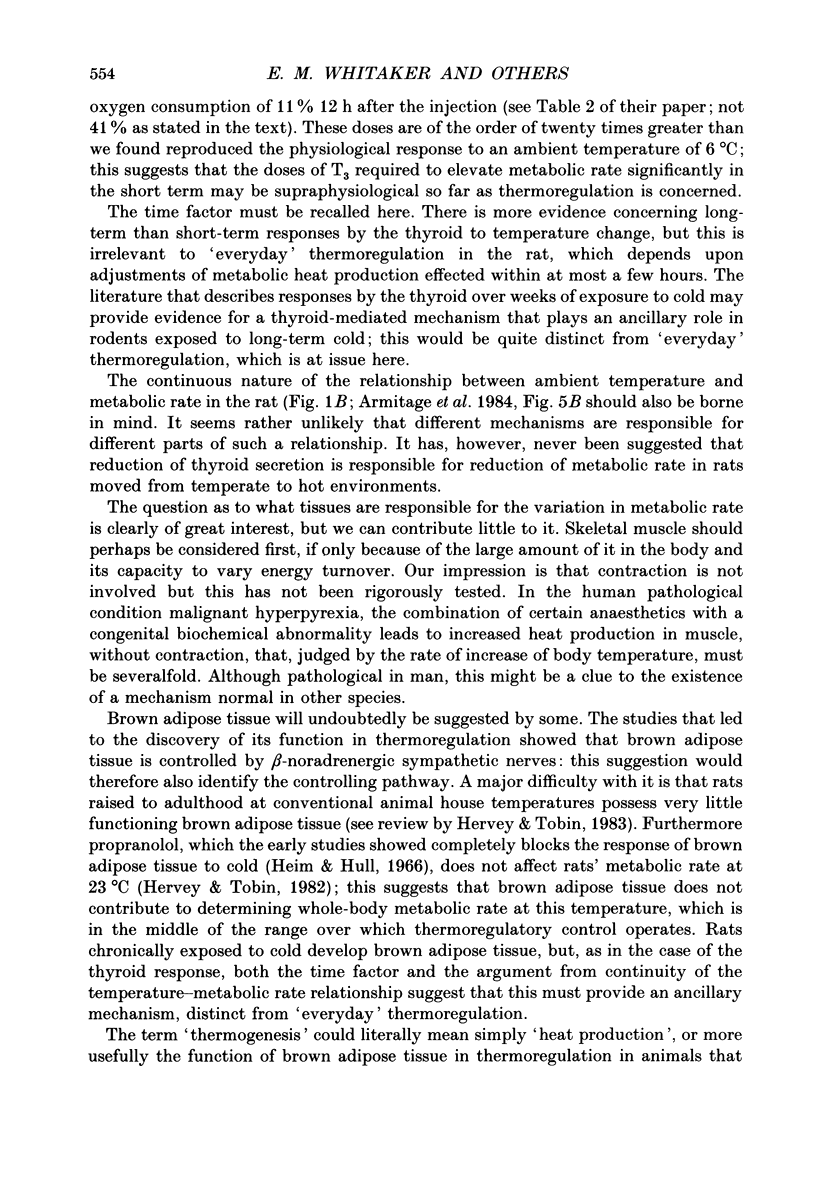
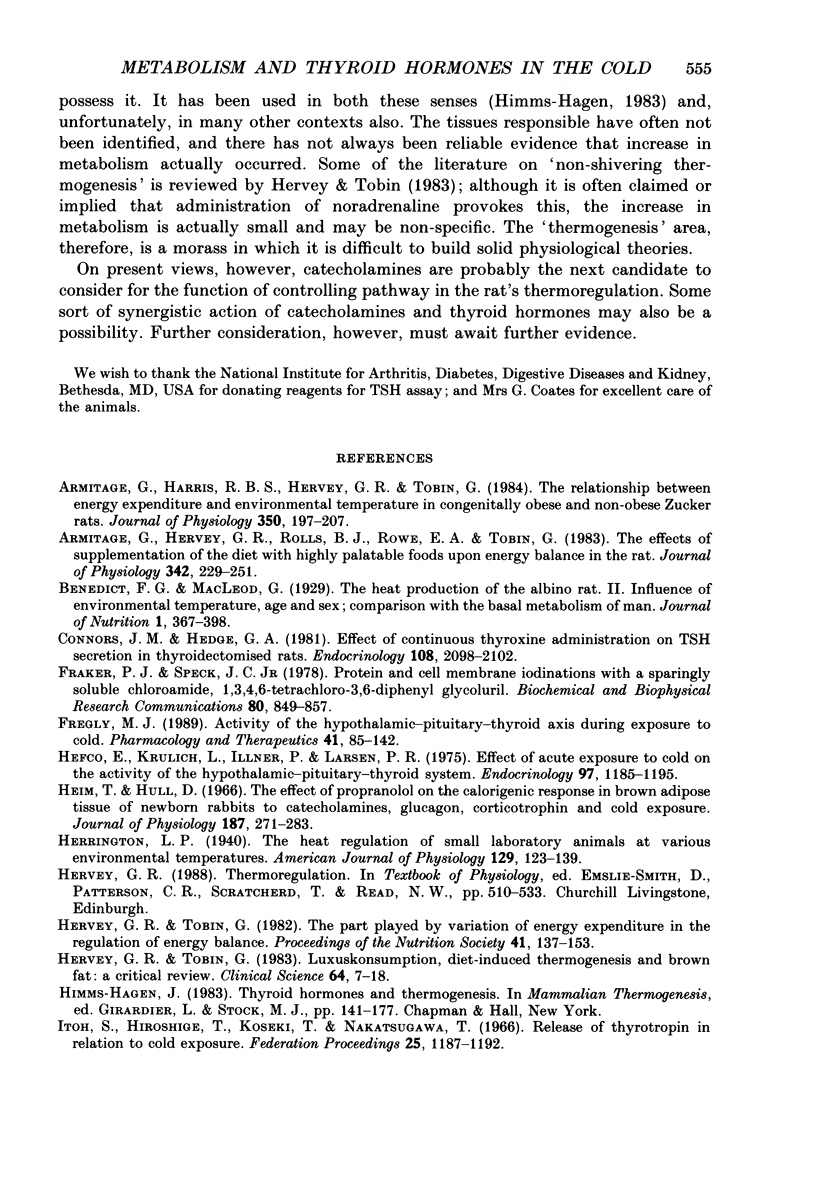
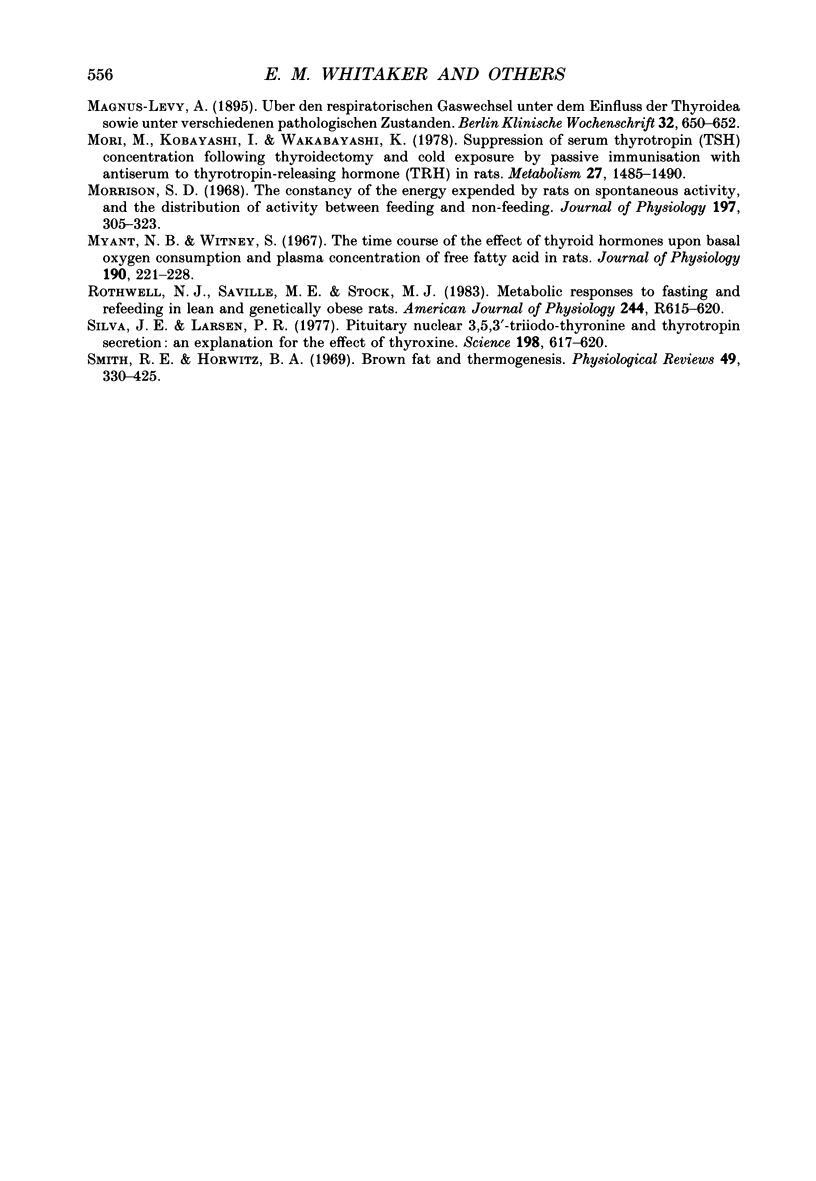
Selected References
These references are in PubMed. This may not be the complete list of references from this article.
- Armitage G., Harris R. B., Hervey G. R., Tobin G. The relationship between energy expenditure and environmental temperature in congenitally obese and non-obese Zucker rats. J Physiol. 1984 May;350:197–207. doi: 10.1113/jphysiol.1984.sp015196. [DOI] [PMC free article] [PubMed] [Google Scholar]
- Armitage G., Hervey G. R., Rolls B. J., Rowe E. A., Tobin G. The effects of supplementation of the diet with highly palatable foods upon energy balance in the rat. J Physiol. 1983 Sep;342:229–251. doi: 10.1113/jphysiol.1983.sp014848. [DOI] [PMC free article] [PubMed] [Google Scholar]
- Connors J. M., Hedge G. A. Effect of continuous thyroxine administration on thyrotropin secretion in thyroidectomized rats. Endocrinology. 1981 Jun;108(6):2098–2102. doi: 10.1210/endo-108-6-2098. [DOI] [PubMed] [Google Scholar]
- Fraker P. J., Speck J. C., Jr Protein and cell membrane iodinations with a sparingly soluble chloroamide, 1,3,4,6-tetrachloro-3a,6a-diphrenylglycoluril. Biochem Biophys Res Commun. 1978 Feb 28;80(4):849–857. doi: 10.1016/0006-291x(78)91322-0. [DOI] [PubMed] [Google Scholar]
- Fregly M. J. Activity of the hypothalamic-pituitary-thyroid axis during exposure to cold. Pharmacol Ther. 1989;41(1-2):85–142. doi: 10.1016/0163-7258(89)90103-4. [DOI] [PubMed] [Google Scholar]
- Hefco E., Krulich L., Illner P., Larsen P. R. Effect of acute exposure to cold on the activity of the hypothalamic-pituitary-thyroid system. Endocrinology. 1975 Nov;97(5):1185–1195. doi: 10.1210/endo-97-5-1185. [DOI] [PubMed] [Google Scholar]
- Heim T., Hull D. The effect of propranalol on the calorigenic response in brown adipose tissue of new-born rabbits to catecholamines, glucagon, corticotrophin and cold exposure. J Physiol. 1966 Nov;187(2):271–283. doi: 10.1113/jphysiol.1966.sp008088. [DOI] [PMC free article] [PubMed] [Google Scholar]
- Hervey G. R., Tobin G. Luxuskonsumption, diet-induced thermogenesis and brown fat: a critical review. Clin Sci (Lond) 1983 Jan;64(1):7–18. doi: 10.1042/cs0640007. [DOI] [PubMed] [Google Scholar]
- Hervey G. R., Tobin G. The part played by variation of energy expenditure in the regulation of energy balance. Proc Nutr Soc. 1982 Jun;41(2):137–153. doi: 10.1079/pns19820024. [DOI] [PubMed] [Google Scholar]
- Itoh S., Hiroshige T., Koseki T., Nakatsugawa T. Release of thyrotropin in relation to cold exposure. Fed Proc. 1966 Jul-Aug;25(4):1187–1194. [PubMed] [Google Scholar]
- Mori M., Kobayashi I., Wakabayashi K. Suppression of serum thyrotropin (TSH) concentrations following thyroidectomy and cold exposure by passive immunization with antiserum to thyrotropin-releasing hormone (TRH) in rats. Metabolism. 1978 Oct;27(10):1485–1490. doi: 10.1016/s0026-0495(78)80020-1. [DOI] [PubMed] [Google Scholar]
- Morrison S. D. The constancy of the energy expended by rats on spontaneous activity, and the distribution of activity between feeding and non-feeding. J Physiol. 1968 Jul;197(2):305–323. doi: 10.1113/jphysiol.1968.sp008561. [DOI] [PMC free article] [PubMed] [Google Scholar]
- Myant N. B., Witney S. The time course of the effect of thyroid hormones upon basal oxygen consumption and plasma concentration of free fatty acid in rats. J Physiol. 1967 May;190(1):221–228. doi: 10.1113/jphysiol.1967.sp008203. [DOI] [PMC free article] [PubMed] [Google Scholar]
- Rothwell N. J., Saville M. E., Stock M. J. Metabolic responses to fasting and refeeding in lean and genetically obese rats. Am J Physiol. 1983 May;244(5):R615–R620. doi: 10.1152/ajpregu.1983.244.5.R615. [DOI] [PubMed] [Google Scholar]
- Silva J. E., Larsen P. R. Pituitary nuclear 3,5,3'-triiodothyronine and thyrotropin secretion: an explanation for the effect of thyroxine. Science. 1977 Nov 11;198(4317):617–620. doi: 10.1126/science.199941. [DOI] [PubMed] [Google Scholar]
- Smith R. E., Horwitz B. A. Brown fat and thermogenesis. Physiol Rev. 1969 Apr;49(2):330–425. doi: 10.1152/physrev.1969.49.2.330. [DOI] [PubMed] [Google Scholar]


